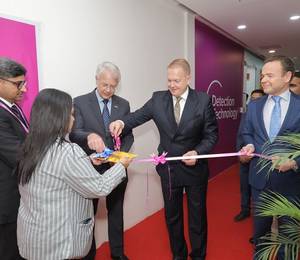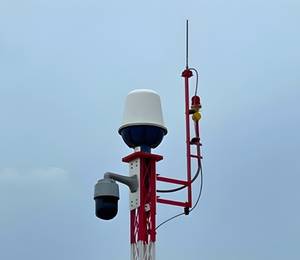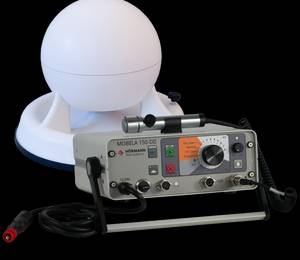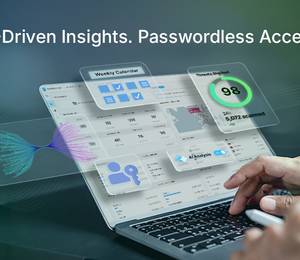The growth and explosion of IoT technology has been astonishing to watch over the past few years. And while we often discuss the impact it’s having in tech and consumer products niches, it’s having an equally profound impact in healthcare – particularly when it comes to patient safety.
To most people, the IoT sounds like some far-off concept that could have an impact down the road. The term is used so frequently that it’s almost become a cliché. But the IoT isn’t just another futuristic technology with theoretical application. If you study today’s evolving healthcare system, you’ll discover that it’s been catalytic in many of the innovations and developments that have occurred over the past year or two.
In particular, the IoT and connected devices are positively impacting patient safety in healthcare. Here are a few of the specific ways:
Adverse Event Reporting
The healthcare industry is overwhelmed by rules, laws, regulations, and insurance. Hospitals and care providers are hesitant to speak out about issues, mistakes, and errors over the fear that they’ll be hit with an onslaught of fines, fees, and lawsuits. Yet proper reporting is one of the only ways to curb the use of dangerous pharmaceuticals and defective products. This is where fully integrated IoT platforms come into play.
Advanced medical device platforms are, for the first time ever, giving healthcare teams real-time access to patient vitals and results. This allows them to make better-informed decisions in the moment, as opposed to waiting for test results. Combined with predictive analytics, doctors can make proactive decisions about potentially adverse results or complications before signs and symptoms emerge.
Improved adverse event reporting benefits both patients and doctors. It helps patients by reducing the likelihood of complications and offering more immediate and long-lasting solutions. It benefits doctors by eliminating litigious mistakes that could potentially lead to negative outcomes and/or lawsuits.
Training and Education
Any time you train someone in a technical field, there’s a gap that must be overcome between theoretical knowledge and experiential understanding. An individual can be trained and educated for years, but until that person is thrown into a real-world experience, there’s no guarantee that they’ll be capable of executing. This situation is constantly being played out in the world of healthcare.
Medical schools and healthcare training programs are perpetually on the lookout for new and superior methods for closing the gap between academic knowledge and real world experience without putting patient safety at risk. For years, this has been a struggle. But more recently we’ve seen how advances in training and simulation technology can efficiently bridge the divide.
For example, companies like Intelligent Video Solutions use real-time video recording solutions to record training sessions and provide immediate feedback that medical students can use to improve and optimize in the middle of a session. The video can then be archived and systematically filed away within an advanced video library for future review and analysis. This sort of real-time feedback accelerates training and better prepares participants for stepping into real-world situations with actual patients.
Remote Monitoring
It’s unrealistic and financially infeasible for patients to stay under direct monitoring around the clock. Once a patient is stable and comfortable enough to return home, it’s no longer practical to remain at the hospital. It would be a waste of money and man-hours – both of which are precious commodities in today’s healthcare industry. But with advances in remote monitoring capabilities, this is no longer an issue.
Connected devices, powered by the IoT, are making it possible for doctors and healthcare teams to accurately monitor their patients vitals and other factors from remote locations. Examples of remote monitoring include:
For patients with a history of heart failure, doctors can send home an internet-connected scale that transmits data and records key benchmarks. When paired with regular phone calls, this leads to far lower 30- and 60-day readmissions.
For patients with heart issues, simple wearable devices – like fitness trackers – can send real time heart rate data to doctors. When paired with patient-specific information, doctors can establish systems that notify them of alarming trends that signal an increased risk for heart-related complications.
Believe it or not, there are now “smart pills” with embedded sensors that tell doctors when medication has been taken. It can then track the pill’s activity so that patients get the most out of each medication they take.
It’s impossible for doctors to be in multiple places at once, but advances in remote monitoring technology are making healthcare teams more flexible than ever before. In turn, patients are getting better care and more consistently positive results.
Workflow Automation
As the number of connected devices increases, hospitals are tasked with finding ways to efficiently manage the data they have available at their fingertips. And without a proper system in place, it’s easy to get lost in a sea of meaningless data and superfluous information.
Consider, for example, that the average patient has somewhere between three and six monitoring devices attached to them while admitted. This requires a time commitment of at least five to 15 minutes for a nurse to check each patient’s vital signs, thereby limiting the number of patients that can be seen to just a few per hour. Medical device connectivity with proper workflow automation helps solve this bottleneck by automatically sending patient data to the underlying Electronic Health Record (EHR) system and producing real-time reports that can be accurately reviewed in seconds.
Workflow automation also helps ensure minimal transcription errors at the point of care, more reliable real-time data analysis, remote configuration of patient medications and dosages, and automatic billing. The end result is improved patient outcomes.
Mobile Health Insights
Connected devices aren’t just for doctors and healthcare professionals. Patients are constantly armed with their own personal smart devices, which has paved the way for an influx of mobile health apps that improve patient outcomes. Some popular and effective patient apps include:
Glucose Buddy; for individuals with diabetes, this free app allows users to manually enter in glucose numbers, insulin dosages, carb consumption, and activity. It then creates push reminders to keep users engaged with their health.
WebMD Pain Coach; Millions of Americans suffer from chronic pain on a daily basis. With this WebMD app, patients can input and rate pain levels on a scale of 1 to 10, while simultaneously recording treatments, moods, and possible triggers. This establishes a sort of journal that patients can use to better discuss their pain with their healthcare providers.
AliveCor; This revolutionary app is paired with a sleek, medical grade EKG pad that allows users to turn a smartphone into a mobile electrocardiogram. It’s capable of detecting tachycardia, atrial fibrillation, bradycardia, and other heart irregularities.
ResolutionMD; This medical viewing app provides instant access to high-resolution radiology diagnostic images and reports on mobile devices. The app streams the data from numerous imaging modalities and uses off-site servers to prepare the visualizations. Because of the outside processing, no sensitive patient information is transmitted on the device. This makes it completely safe and secure.
Mobile apps are constantly coming and going, but it’s exciting to catch a glimpse of some of the potential connected devices offer on the patient-side of things. As IoT technology improves and consumer-grade mobile devices become more advanced, look for even more useful innovations to emerge.
Surgical AI Robots
Robotic surgery is no longer a far-fetched dream. We’re living in a period of significant innovation and some of today’s most intricate and complex surgeries are now being performed by robotic systems and advanced software. It’s estimated that the global surgical robotics market will reach $98 billion by 2024 – a compound annual growth rate of 8.5 percent from 2017 to 2024. This represents a pretty serious shift.
Robots – which are being used in fields like urology, neurology, orthopedics, gynecology, and general surgery – are shown to be safer, more efficient, and more cost-effective. They allow for minimally invasive procedures, faster recovery, and lower rates of human error. As technology improves, more hospitals around the country will shift significant investments into robotics.
The Future of Healthcare
Few industries move as fast as healthcare. Hundreds of millions of dollars are spent each year on new research and discoveries with the aim of delivering better value to stakeholders at every level of the system – including patients, doctors, administrators, medical students, educators and public health officials. As we continue to keep an eye on the development of the IoT, it’ll be interesting to track the positive impact it has on patient safety and well-being. Big things are coming and the future looks brighter than ever!











